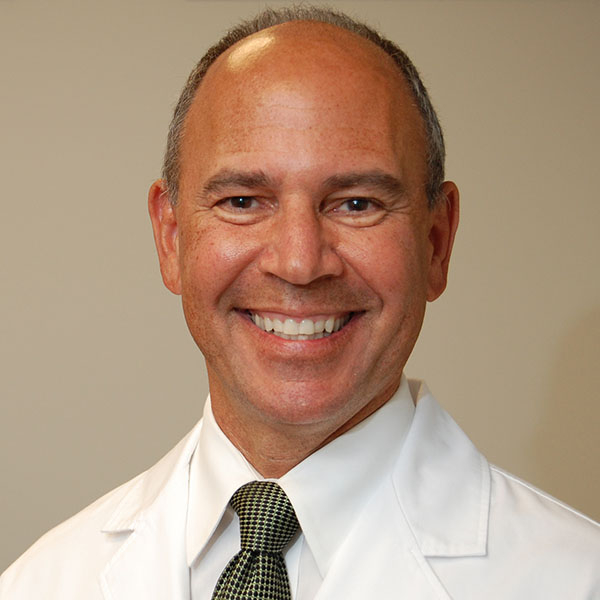

Colon cancer is the second-deadliest form of cancer after lung cancer. If recent messages about colon cancer screening have left you a little confused, that's understandable. In August, the American College of Physicians (ACP) released updated guidance for colon cancer screening that differs from other major organizations, including recommendations from the American Cancer Society (ACS) and the US Preventive Services Task force (USPSTF).
So, what do you need to know?
How does the advice differ?
First, please note that this advice applies only to people at average risk without a family history of colon cancer. If you have family history, or if other health issues put you at higher-than-average risk for colorectal cancer, talk to your doctor about the best course of action for you.
The main point of disagreement relates to the age at which people should start getting screened. The new ACP guidance says 50, while the other two organizations recommend 45. That earlier age is endorsed by the U.S. Multisociety Task Force on Colorectal Cancer. It's also endorsed by many physicians, including Harvard Medical School professor Dr. Andrew T. Chan, a gastroenterologist and director of epidemiology at Massachusetts General Hospital Cancer Center, who helps explain key facts below.
Why do experts suggest starting screening earlier?
"We're facing an unexplained and alarming increase in the incidence of colon cancer in people younger than 50," says Dr. Chan.
Overall, deaths from colon cancer dropped by 2% per year from 2011 to 2020. But that's not the case among people younger than 50. In that age group, deaths from colon cancer rose between 0.5% and 3% during the same time period, according to statistics published in 2023.
The rising rates of colon cancer in younger people are occurring in all racial and ethnic groups, with the steepest rises seen among Alaskan Natives and Native Americans. Overall, Blacks and African Americans are more likely to get and die from colon cancer than whites, and early-onset cases are higher in Black individuals than whites.
Efforts to encourage colon cancer screening began in the mid-1990s. Today, about 60% of adults over 50 follow the advice to receive a colonoscopy (described below) on a regular basis. This track record, while not perfect, likely explains the decline in deaths from colon cancer in older adults.
"I think that promoting earlier screening will help stem the rise in early-onset cases, at least for those in their 40s. We've also seen that earlier colonoscopies may be associated with lowering incidence of colon cancer even later in life, "says Dr. Chan.
What are the different screening tests for colon cancer?
The two most widely used screening tests are a standard colonoscopy and various stool-based tests.
Colonoscopy. For this test, a gastroenterologist or surgeon snakes a long, flexible tube with a camera on the end through your rectum and beyond to inspect the entire length of your colon. Considered the gold-standard test, this procedure can detect precancerous polyps called adenomas, and allow for their removal.
The test requires taking laxatives and drinking lots of fluids beforehand to clean all the fecal material (stool) out of your colon. Serious complications, which include perforation or bleeding, are rare, occurring in about three in 1,000 procedures. If no polyps are found, a repeat colonoscopy isn't recommended for another 10 years. If you have polyps, or your risk or symptoms change, this interval will be shorter.
Stool tests. The more worrisome colon polyps (adenomas) often shed tiny amounts of blood and abnormal DNA into the stool. This can be detected from samples you collect yourself at home.
- Two tests, the fecal occult blood test (FOBT) and fecal immunochemical test (FIT), check for blood. They require small stool samples that you put on a card or in a tube that's then mailed to a lab. These tests should be done every year.
- A third option, the FIT-DNA test, checks for both blood and abnormal DNA; it's usually repeated every three years.
Additionally, the guidelines from the American College of Physicians suggest another option: flexible sigmoidoscopy, which inspects only the lower part of the colon, once every 10 years, combined with a fecal FIT testing every two years. However, doctors in the United States rarely order sigmoidoscopy today.
If flexible sigmoidoscopy or any of these stool tests show evidence of a problem, a colonoscopy is needed to check for adenomas or cancer.
Why might stool-based screening make sense for younger adults?
Colonoscopy isn't necessarily the best initial screening test for everyone, says Dr. Chan. That's especially true for younger people, mainly because it's time-consuming and inconvenient.
"Maybe you just can't find time in your schedule or are worried about having a colonoscopy," he says. If that's the case, a stool-based test — which is noninvasive and takes very little time — is an appropriate option.
"The worst option is not doing anything, because early detection and treatment can prevent deaths," he says.
About the Author

Julie Corliss, Executive Editor, Harvard Heart Letter
Julie Corliss is the executive editor of the Harvard Heart Letter. Before working at Harvard, she was a medical writer and editor at HealthNews, a consumer newsletter affiliated with The New England Journal of Medicine. She … See Full Bio View all posts by Julie Corliss
About the Reviewer

Howard E. LeWine, MD, Chief Medical Editor, Harvard Health Publishing
Dr. Howard LeWine is a practicing internist at Brigham and Women’s Hospital in Boston, Chief Medical Editor at Harvard Health Publishing, and editor in chief of Harvard Men’s Health Watch. See Full Bio View all posts by Howard E. LeWine, MD





